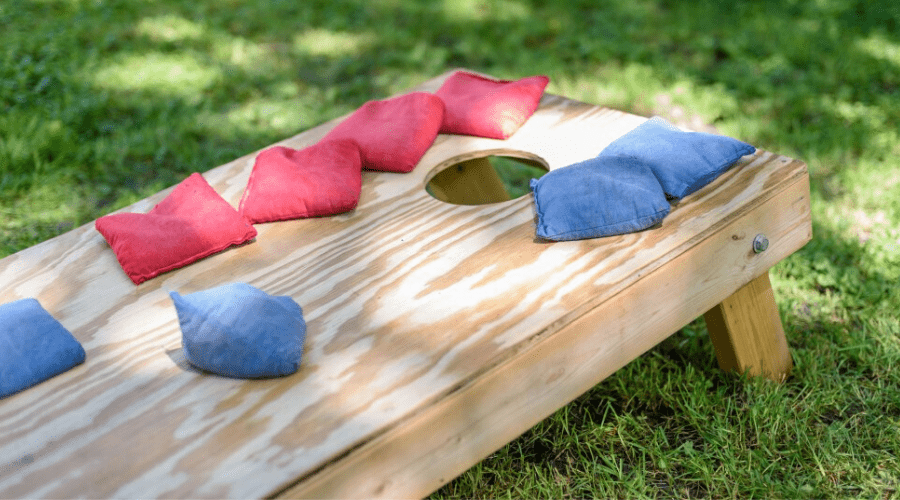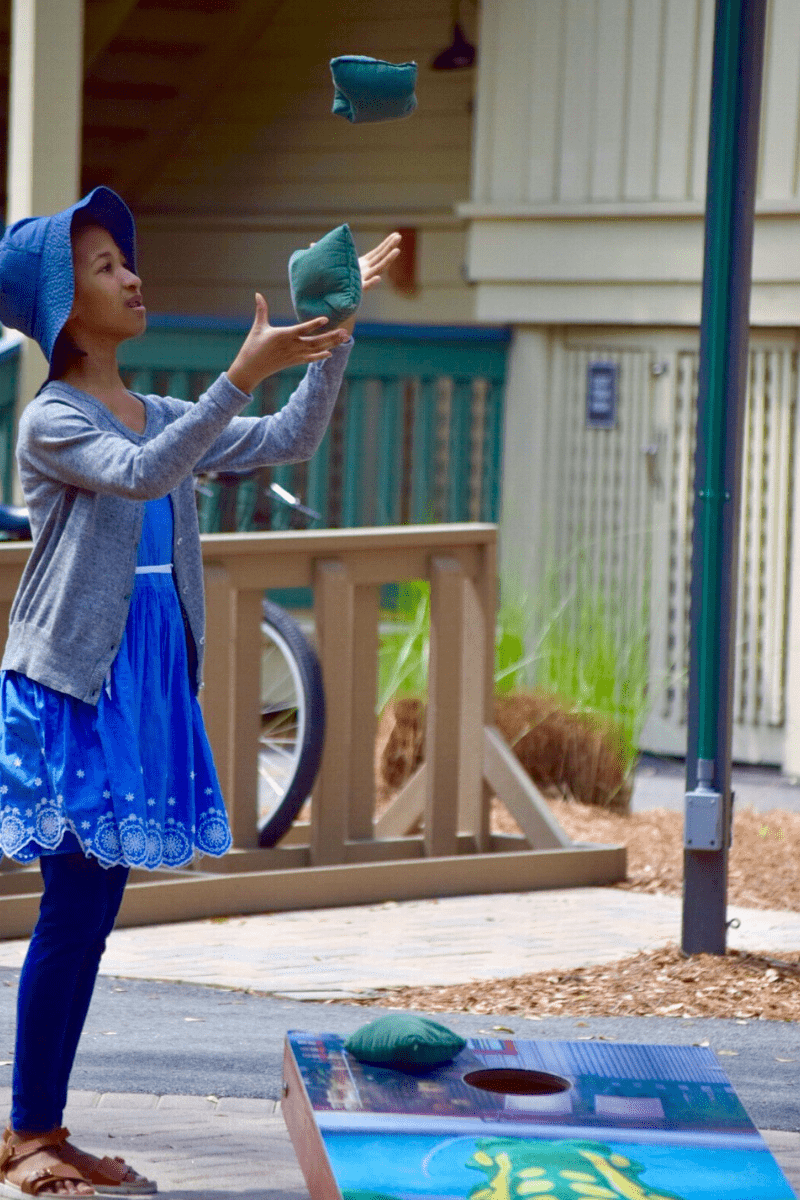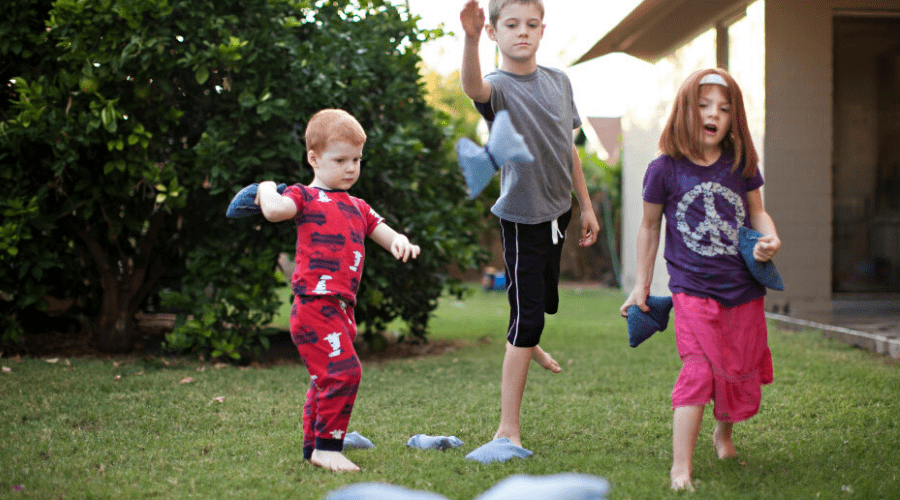Some people call it bean bag toss, while others refer to it as sack toss. Regardless of what it’s called in the region where you live, cornhole is a game that has been around for more than a century, and it has been the highlight of outdoor gatherings and festivities ever since the concept was first introduced.
What’s super interesting about cornhole is that even if the rules are easy to understand, the game itself is very difficult, and it requires a lot of practice to actually be good at it. How do you play cornhole and what are some of the things that you should know about the game? Read on and find out!
Cornhole FAQs
How Many Bags Do I Need to Play Cornhole?
Eight. Since there are two teams and the pieces of a cornhole set are available in two colors, four bags will have one color, while the other four will have a distinct color.
How Do I Throw a Cornhole Bag?
In any way you like. There are no rules telling players how to actually throw the bag, which is why some players have developed their own success methods (like the arc throw). Others like to try a spin throw, which implies flattening the bag and throwing it using a motion similar to that of throwing a Frisbee.
What is the Distance Between the Two Opposing Boards?
The rule says that in order to set up a game of cornhole, the two opposing boards have to be placed at a 27-foot distance from one another’s edge. That means that the two opposing holes will have exactly 33 feet of distance between them.
How to Play Cornhole
Cornhole is a classic backyard game that brings out the competitive spirit in people and has been the number one game at picnics and barbecues for a very long time. You will need two or four players for the game. That means that you can face an opponent, or team up with another person and play a 2v2 game. The rules of the game are quite simple.
Team Play Rules
- If you team up with someone else to face two opponents, you can give each of your teams a cool name (let’s say, team Red and team Blue).
- One player from team Red and one from team Blue will stand next to each board. People will take turns throwing the bags to the other team’s board and try to throw them through the hole.
- The two players will take turns tossing each of the four bags their team has.
- Once all the bags have been thrown, points will be calculated (we’ll get to that in a bit).
- Now it’s time for the other two members of Team Red and Team Blue to throw the cornhole bags, following the same rules as before.
- This round now begins with the opposite team of the one who started throwing the first round.
- The cycle is repeated until one of the teams reaches a minimum of 21 points.
Individual Play Rules
- This type of cornhole gameplay is very similar to the team-based one.
- Individual players will alternate sides when playing alone.
Point System
- Calculating points in cornhole is very easy, as you score each time one of the bags you throw makes it through the hold in the board you’re aiming at.
- If you land a bag in a hole, you get three points.
- Every bag that lands on the board without going through the hole is valued at one point.
- If a bag lands either hanging though the hole (but not inside it) or at the edge of the board but without touching the ground, the player who threw it also gets one point.
- Points are calculated at the end of each round (when both teams are done with throwing their bags).
- The team that scores more will add extra points to their total score. These extra points are the difference between how much they scored and how much the other team scored. For example, if a team gets seven points after a round and the opposing team had only four, those three points difference will be added to the team who scored seven points, leading to a total of 10 points. If both teams have the same score after one round, none of them get extra points.
Cornhole Terminology
Believe or not, cornhole is a game so old (it dates back to the year 1883) that it has developed its own little dictionary. Here are some of the most common cornhole terms that players might want to know about if they are really serious about becoming the best at this game:
- Airmail = term used to describe a bag that’s thrown directly into a hole, without touching or bouncing on the board.
- Blocker = a bag thrown in front of a hole, thus blocking any potential future opponent slide shots.
- Dirty bag = describes a bag that’s touching the ground (even those that are hanging off the edge of the board).
- Frame = similar to a round, where people throw all their four bags.
- Four bagger = a combo made by a player where all four bags are thrown directly inside the hole during a round.
- Wash = having each of the two teams score the exact same number of points during a round, thus eliminating the bonus points that one team would get.
- Shortbag = describes a bag that fell onto the ground before the board itself.
Tips for Playing Cornhole
Cornhole is the type of outdoor game that has been around for so long that some people could write up a guide on how to be good at the game. It does take a lot of practice to see which throws you’re good at and discover what moves will help you win, but here is a set of universal tips that will make your game better, more fun, and less frustrating:
- The first and most important step towards becoming good at this throwing game is to find a comfortable position for your throws. In general, people who play this game like to throw the bags using their dominant hand whilst having their opposite foot forward. Regardless of your position, you need to practice your throw to make it fluid.
- Believe it or not, there are actually four main shots that master cornhole players do. The first one is the slider, where you throw the bag to the front side of the board and have it slide inside. The blocker is a throw that can prevent opponents from using the slider method and it implies throwing a bag near the hole. The push implies a bag nudge to push in into the hole or to remove a blocker. An airmail is throwing the bag directly into the hole. The sooner to master these four shots, the more chances you have at being better at this game.
- Expert cornhole players advise beginners to play the game without thinking about the hole. Instead, they talk about focusing on the first six inches of the board in order to use velocity to get the bag to slide into the hole.
- Don’t try to pull any fancy throws until you have mastered the basics of the game. What does that even mean? It means that you memorized the terminology and know how to play the game correctly (in theory) to win, it means that you’ve found a comfortable throwing position, and it also means that you know how to hold the bag for a more accurate pitch. The idea is to first be able to throw predictable shots before you try to master the specialty ones. If you aim for airmail from the first few games, you are very likely to be disappointed and quit playing cornhole altogether.
- As with pretty much every new skill that you want to develop in this lifetime (and especially when you want to get good at a game or a sport) the key is to practice as often as possible. You can’t expect to become a cornhole master by playing the game five or 10 times. So, if you want to be the best and impress people with your cornhole skills, take every opportunity you can to practice. Buy a cornhole set, go out in the backyard, and start practicing the basic throws until you’re really good at them.
Conclusion
While the rules and gameplay of cornhole are relatively easy to understand, mastering the game is actually a lot more difficult than it seems. People that have become cornhole champions (yes, there is such a thing as a cornhole championship) have practiced their throws a lot, trying to see what best fits their game style and have adapted their throws to take down opponents through ingenious tactics. Do you have what it takes to become the ultimate cornhole champion?




